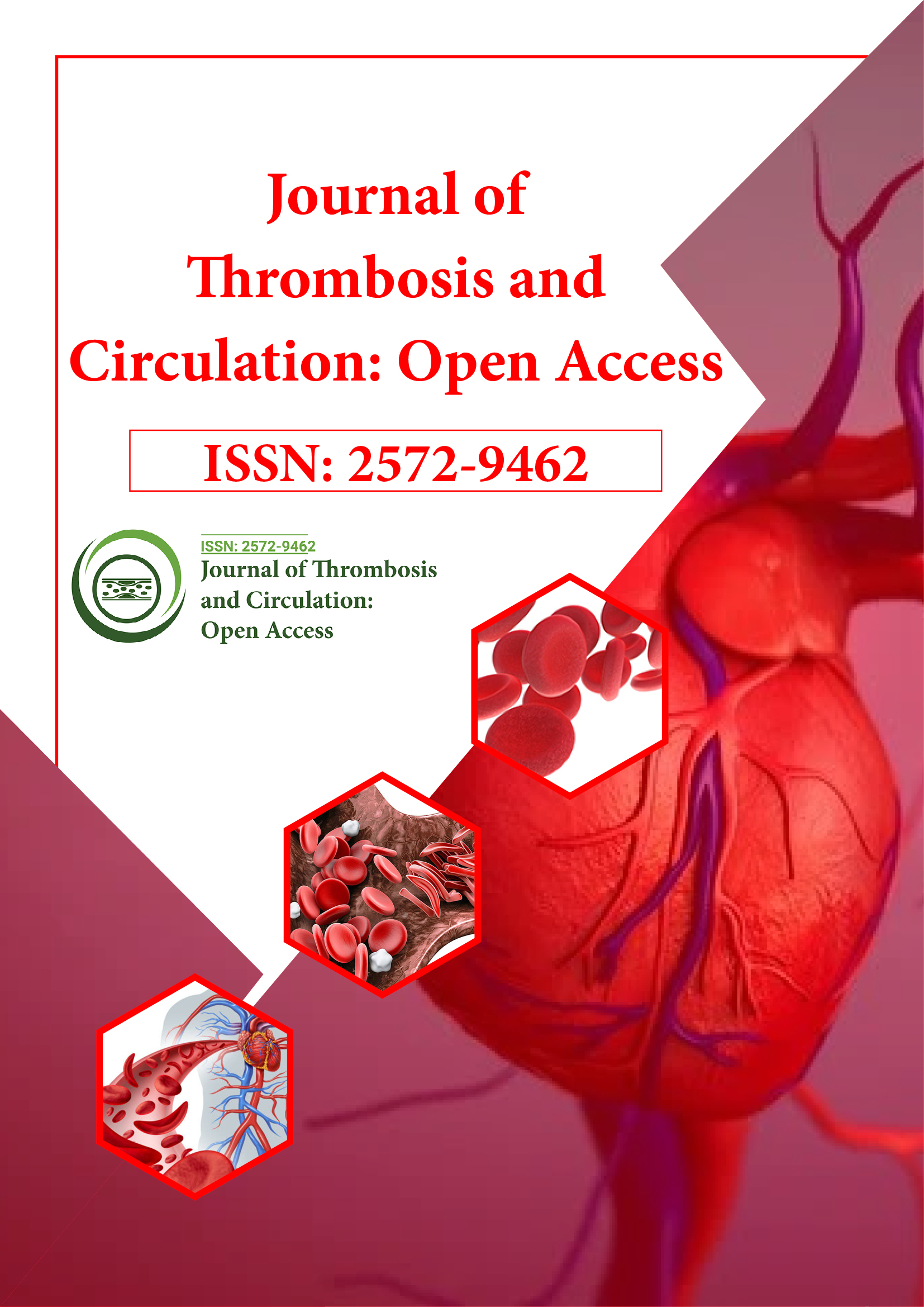Indexed In
- RefSeek
- Hamdard University
- EBSCO A-Z
- Publons
- Google Scholar
Useful Links
Share This Page
Journal Flyer

Open Access Journals
- Agri and Aquaculture
- Biochemistry
- Bioinformatics & Systems Biology
- Business & Management
- Chemistry
- Clinical Sciences
- Engineering
- Food & Nutrition
- General Science
- Genetics & Molecular Biology
- Immunology & Microbiology
- Medical Sciences
- Neuroscience & Psychology
- Nursing & Health Care
- Pharmaceutical Sciences
Perspective - (2022) Volume 8, Issue 1
A Brief Note on Cerebral Venous Sinus Thrombosis
Bart Van Den*Received: 24-Dec-2021, Manuscript No. JTCOA-22-1119; Editor assigned: 27-Dec-2021, Pre QC No. JTCOA-22-1119; Reviewed: 10-Dec-2022, QC No. JTCOA-22-1119; Revised: 13-Jan-2022, Manuscript No. JTCOA-22-1119; Published: 19-Dec-2022, DOI: 10.35248/2572-9462, 22.1.178
Description
To function properly, the brain needs a constant supply of oxygenated blood. This blood is supplied by the heart, which sends oxygen-rich blood to the brain through an arterial and vascular system. However, after the brain runs out of oxygen, blood needs to be returned to the heart. It occurs through a network of veins and so-called sinuses or tubular channels. In rare cases, a blood clot may form in the sinus. This is a condition known as cerebral venous sinus thrombosis. When a blood clot forms in the cerebral venous sinus, it acts like a bottle stopper and effectively blocks blood flow. When blood collects, edema or swelling occurs in areas of the brain near the blood clots. This swelling can damage and destroy brain cells. Also, under sufficient pressure, veins and other blood vessels can rupture, causing cerebral hemorrhage and cerebral hemorrhage, which can cause a variety of serious symptoms. Some sinuses also play a role in absorbing cerebrospinal fluid, the clear fluid found around the brain and spinal cord. Thrombosis in one of these specialized sinuses reduces the absorption of cerebrospinal fluid, which in rare cases can lead to hydrocephalus. It increases pressure in the brain and can cause a variety of symptoms such as headaches, nausea, blurred vision and sensory deficits.
CVST is a rare type of blood clot. It is most common in young adults and females, but it can affect people of all ages and genders
Causes of cerebral venous sinus thrombosis
To function properly, the brain needs a constant supply of oxygenated blood. This blood is supplied by the heart, which sends oxygen-rich blood to the brain through an arterial and vascular system. However, after the brain runs out of oxygen, blood needs to be returned to the heart. It does this through many things that can cause your brain to form blood clots. Risk factors differ between adults and children or newborns. It is more common in women than in men. The risk factors for children are:
• Sickle cell anemia
• Heart disease that you were born with or that you may develop
• Iron deficiency
• Certain types of infections that affect the ears, face, and throat
• Dehydration
• Head injury
• Blood clotting problems
CVST is more likely to occur in newborns if the mother has a particular infection. A history of infertility can also increase the risk.
To function properly, the brain needs a constant supply of oxygenated blood. This blood is supplied by the heart, which sends oxygen-rich blood to the brain through an arterial and vascular system.
The risk factors for adults are:
• Pregnancy
• High estrogen levels after pregnancy
• Oral contraceptives, patches, rings and other estrogen-containing drugs
• Thrombus formation problems
• Cancer
• Obesity
• Collagen vascular diseases such as lupus, Wegener’s granulomatosis, Behest’s syndrome
• Hypotension in the brain
• Enteropathy such as Crohn’s disease and ulcerative colitis
• COVID-19
How is it diagnosed and treated?
People who have had a stroke will recover best if they receive immediate treatment. If you have symptoms of suspected stroke, have someone take you to the emergency room immediately or call 911 for help. Your healthcare provider will ask you about your medical history and do a physical examination. Family and friends can explain the symptoms they have seen, especially if the person suffering from a stroke is unconscious. However, definitive diagnoses are often based on blood flow in the brain. Imaging tests show areas of blood flow. These tests can be used to diagnose CVST.
• MRI scan
• CT scan
• Venography
• Angiography
• Ultrasound
• Blood test
Treatment should start immediately. It must be done in the hospital. Treatment plans may include:
• Liquid
• Antibiotics if infected
• If a seizure occurs, drugs to control the seizure
• Monitor and control head pressure
• Drugs that prevent blood coagulation (anticoagulants)
• Surgery
• Continuous monitoring of brain activity
• Measure your eyesight and observe changes
• Rehabilitation (rehabilitation)
Citation: Den BV (2022) A Brief Note on Cerebral Venous Sinus Thrombosis. J Thrombo Cir. 8:178.
Copyright: © 2022 Den BV. This is an open-access article distributed under the terms of the Creative Commons Attribution License, which permits unrestricted use, distribution, and reproduction in any medium, provided the original author and source are credited.
